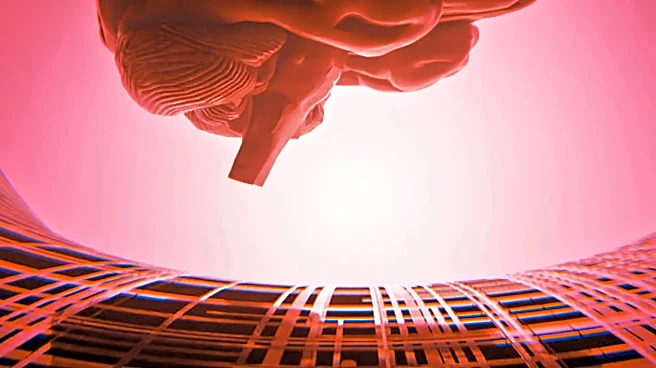What's Happening?
A collaborative research team from the University of Cambridge, University College London, the Francis Crick Institute, and Polytechnique Montréal has developed a groundbreaking imaging technique called Advanced Sensing of Aggregates–Parkinson’s Disease (ASA–PD). This technique allows scientists to directly visualize and quantify protein clusters, known as oligomers, in post-mortem brain tissue. These oligomers are believed to be early drivers of Parkinson's disease pathogenesis. The research, published in Nature Biomedical Engineering, marks a significant advancement in understanding the mechanics of Parkinson's disease, which is the fastest-growing neurological disorder globally. The ability to see these protein assemblies, which were previously too small to detect, could lead to improved diagnostics and potential treatments for Parkinson's disease.
Why It's Important?
The development of ASA–PD is crucial as it provides a new method to study Parkinson's disease at its earliest stages. This could lead to better understanding of how the disease develops and spreads in the brain, potentially informing new treatment strategies. Parkinson's disease affects millions worldwide, and the number is expected to double by 2050. Current treatments only alleviate symptoms without halting disease progression. By visualizing oligomers, researchers can identify early markers of the disease, which could lead to earlier diagnosis and intervention. This technique also opens possibilities for studying other neurodegenerative diseases like Alzheimer's and Huntington's, where protein aggregation plays a significant role.
What's Next?
The research team plans to further explore the implications of their findings, potentially leading to new diagnostic tools and treatments for Parkinson's disease. The ASA–PD technique could be adapted to study other neurodegenerative diseases, providing insights into protein aggregation processes. Researchers may also investigate the subclass of oligomers found exclusively in Parkinson's patients, which could serve as early indicators of the disease. Continued collaboration among institutions and further studies will be essential to translate these findings into clinical applications.
Beyond the Headlines
The ability to visualize oligomers in human brain tissue challenges previous assumptions about Parkinson's disease development. This breakthrough could shift the focus of research from large protein deposits, like Lewy bodies, to smaller oligomers that may play a critical role in disease onset. Ethically, this research emphasizes the importance of studying human brain tissue to understand complex diseases, potentially leading to more personalized medicine approaches. The technique's applicability to other diseases highlights the interconnected nature of neurodegenerative disorders and the need for comprehensive research strategies.










